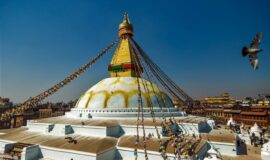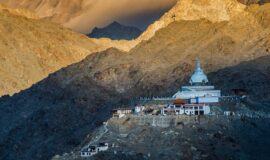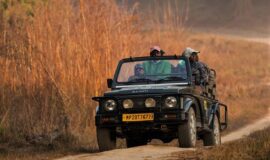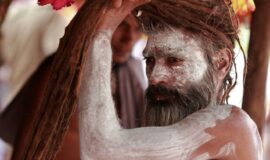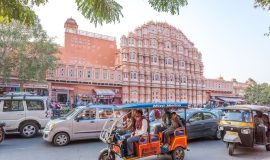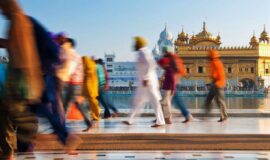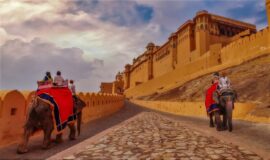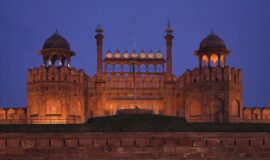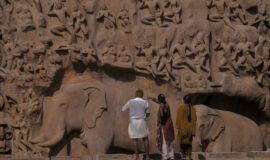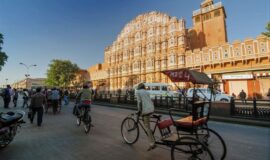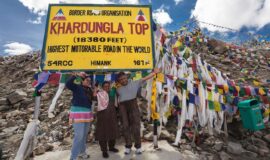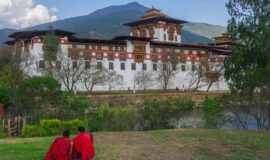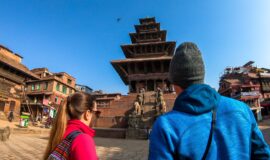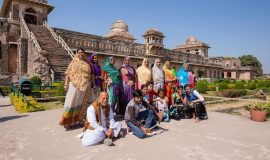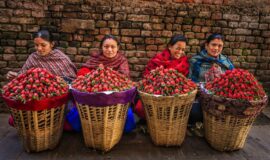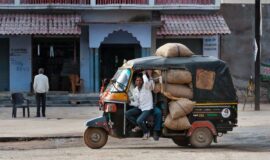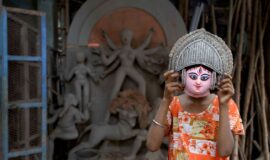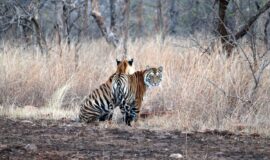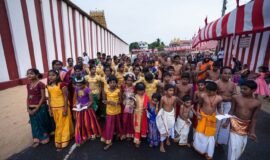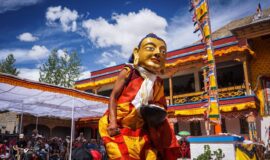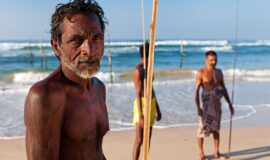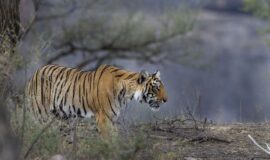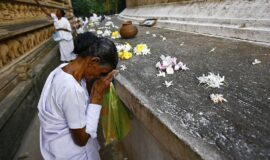Hanuman Dhoka (Old Royal Palace): The Main Durbar Square in Kathmandu
OLD ROYAL PALACE
Nassal Chowk
The Tribhuvan Museum
Basantapur Tower
Mahendra Museum
Lohan Chowk
Mul Chowk
Sleeping Vishnu
Kumari Chowk
Kasthamandap
Singha Satal (Silyan Sattal)
Kabindrapur Mandir (Dhansa)
Maru Ganesh (Ashok Vinayak)
Narayan Mandir
Gaddi Baithak
Mahadeva Mandir (Maju Deval)
Shiva Parbati Mandir
Around the Taleju Bell
The Sweta Bhairava Mask
Krishna Mandir
Jagannath Mandir
Kala Bhairava
Taleju Mandir
Travelers from all over the globe begin their adventure in Kathmandu at the Main Durbar Square. It is teeming with life, holds numerous popular attractions and sights, and is the location of the Old Royal Palace (Durbar). While parts of the area were damaged by earthquakes, it continues to attract and entrance visitors every year.
Locally called the Hanuman Dhoka, a name referring primarily to the front gate, the Old Palace encompasses quite a lot of ground and has many interesting sights to see. Before you go inside, stop a moment at the colorful wooden lattice to the right-hand side. If you look between the slats you can catch a glimpse of a metal mask depicting a frightening depiction of Shiva, Seto Bhairab. This mask is positioned to scare off evil spirits who might want to enter the palace. Once every year during Indra Jatra celebration, the lattice comes down and the four-meter tall icon is decorated with paper and flowers. Every evening, a pump and hose are set up so rice beer comes out of the mask’s mouth opening. This attracts plenty of young men eager for a taste.
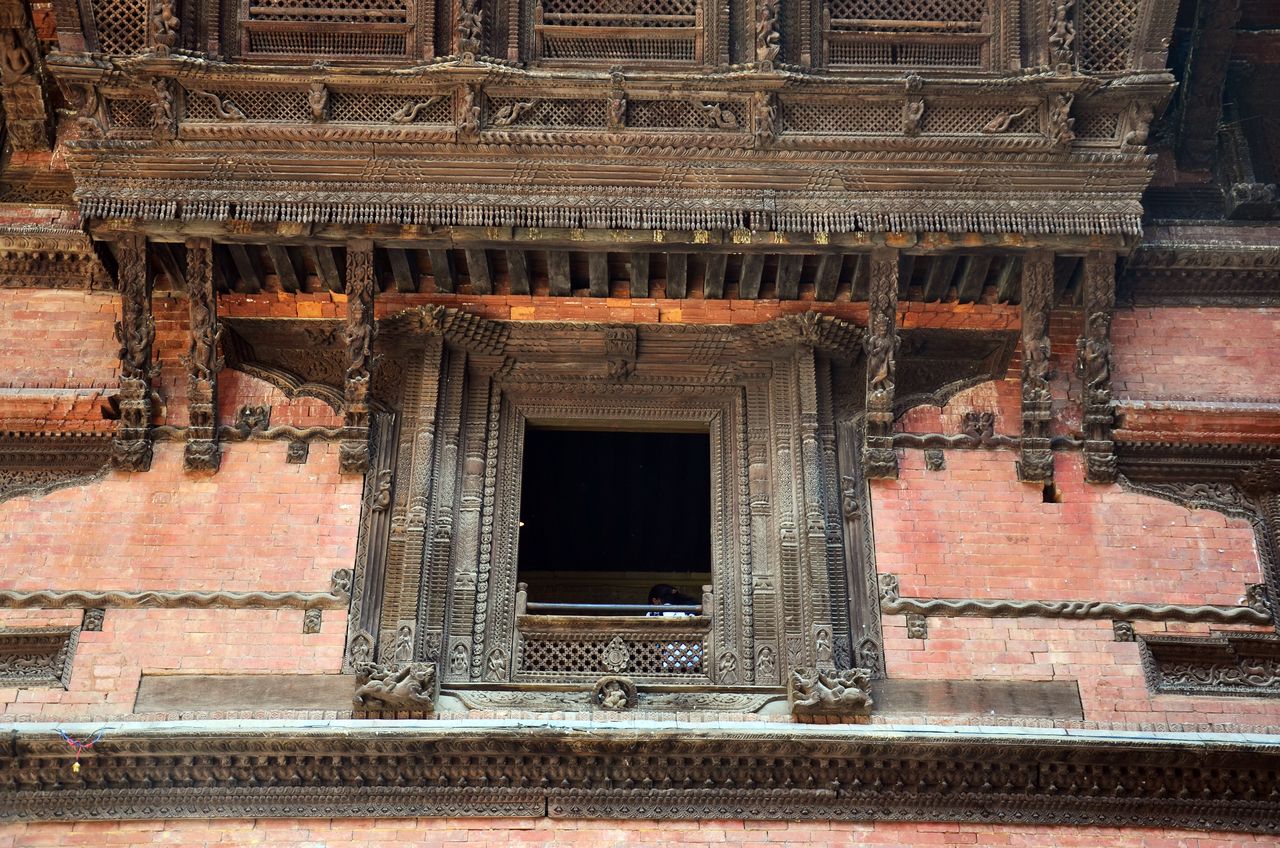
Exquisite wooden carvings at Hanuman Dhoka in Durbar Square, one of three royal palace squares in the Kathmandu Valley. All three squares are World Heritage sites © Anirut Thailand
To the left sites a large column that supports a statue of King Pratapa Malla kneeling on a lotus flower. He paid for most of the statues in the square. The statue of the king faces the third-floor Degu Taleju temple room he used to pray in. Small statues of his top two wives and four favorite sons rest nearby. The kneeling position depicted in this and other Malla king statues differ considerably from the upright, more martial positions of kings both Rana and Shah.
Stroll across the open space until you reach the Hanuman Dhoka, the entrance to the palace. The Hanuman stands as a guardian of the gate in red robes and layers of sindhur and mustard oil on his face. Visitors covered his features well in the 300 years he has stood here under a regal umbrella. This Monkey King of Ramayana was much beloved by the Mallas. He is said to bring them martial victory and keep demons, witches, and even smallpox away.
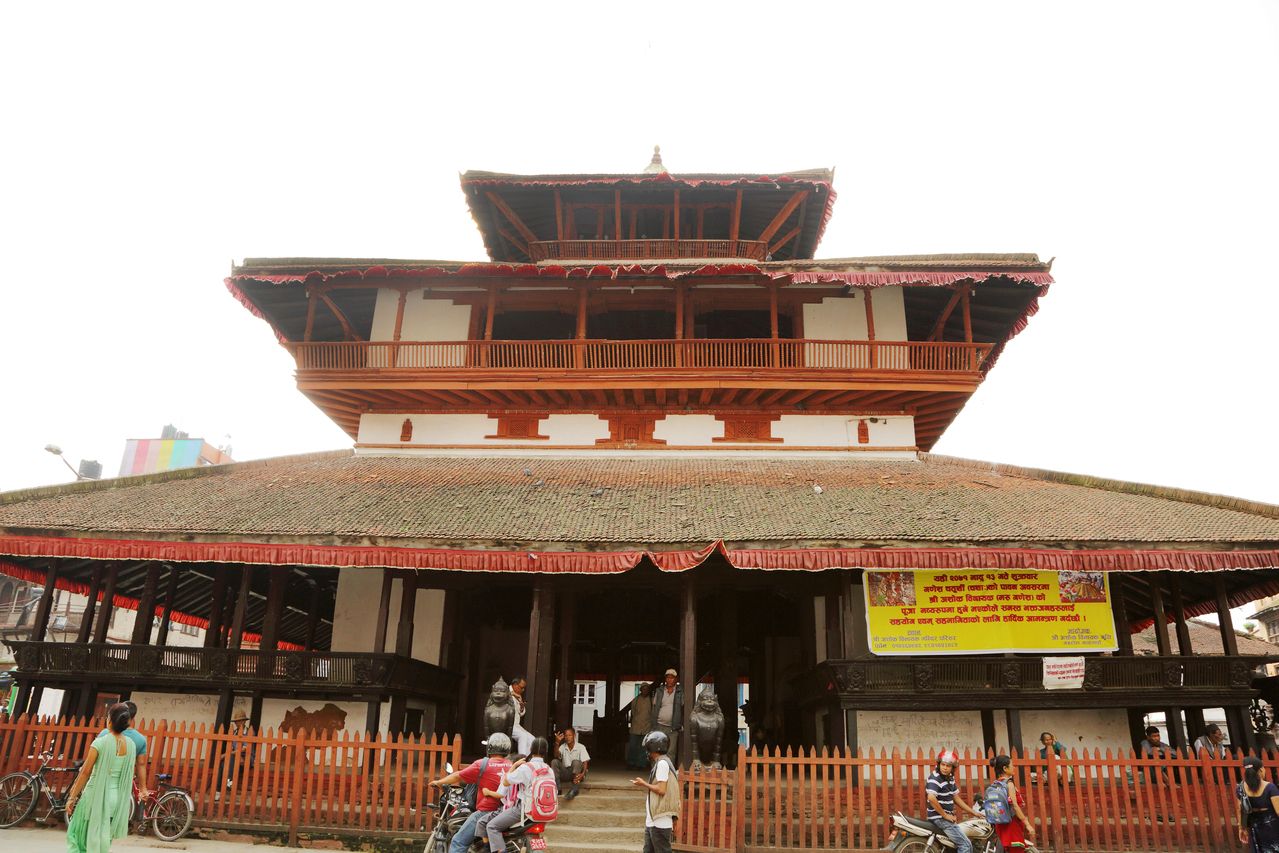
Kasthamandap Temple on Hanuman Dhoka in Kathmandu was completely destroyed during the devastating 2015 earthquake, but restored in 2022 to its former glory. It was constructed of wood without any iron nails © shree ram shrestha
OLD ROYAL PALACE
The original palace in this spot used to be much larger. Notes from 1880 told of between 40 and 50 different courtyards to enjoy. Now only about 12 still exist. Some have simply succumbed to the passage of time while others met their end in an earthquake in 1934. The current palace grounds now cover five acres. This spot historically had a palace since 500 AD, though none of the existing buildings go anywhere close to that far back. The Hanuman Dhoka, for example, is only about 300 years old. The current Old Royal Palace consists of multiple yards, halls, temples, buildings, and towers built under the rule of various kings at different times.
This building truly belongs to the Malla Dynasty. Prior to moving to the current Narayanhiti Palace, the Shah rulers only stayed at the old site for about 100 years. The location in Durbar is partially open to the public, preserved for ceremonies and spiritual traditions, and also houses offices and storage.
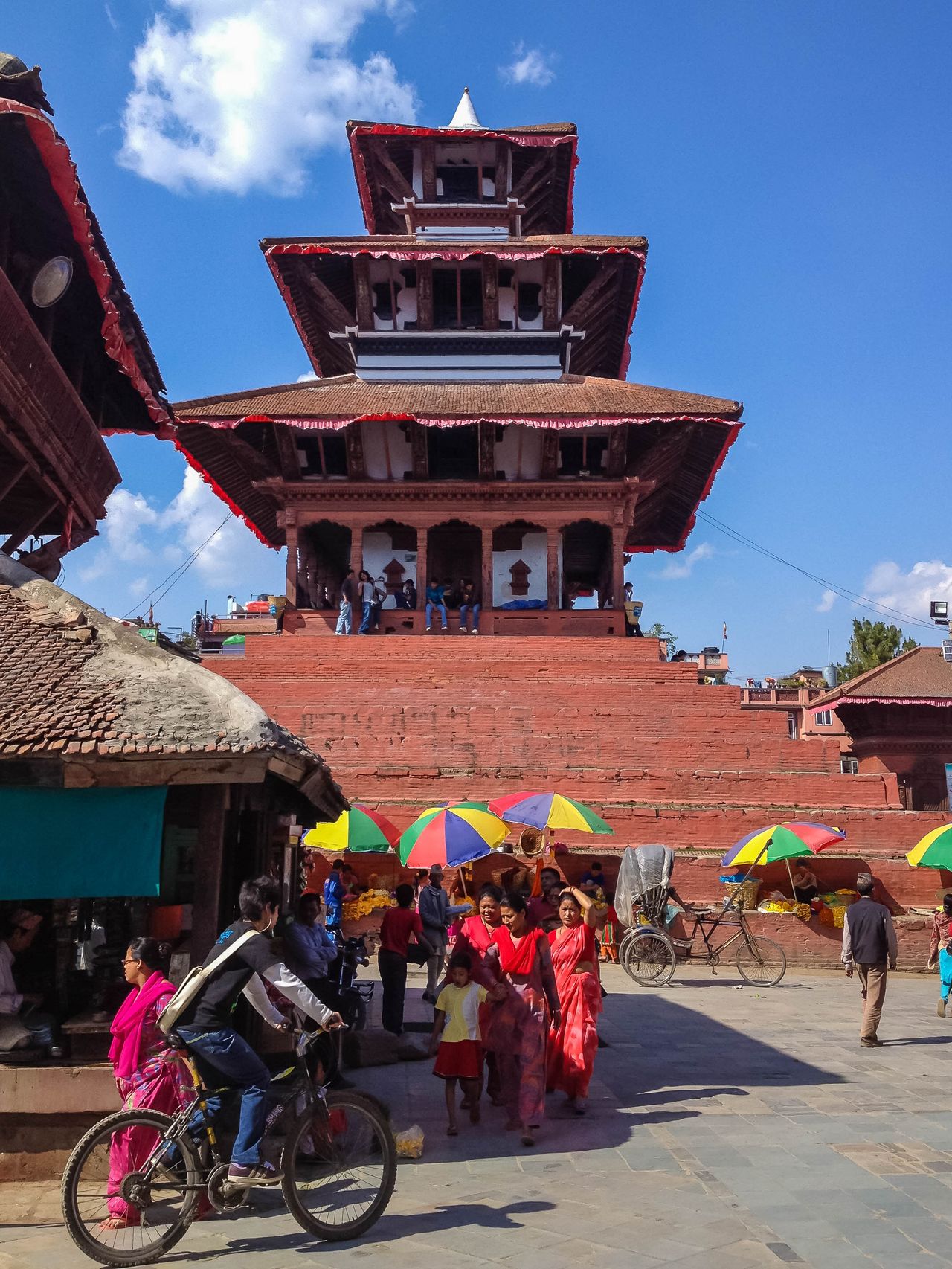
Basantapur Square is part of the ancient Hanuman Dhoka Complex that spreads over five acres © FS11
Nassal Chowk
Named as an honor to Shiva’s dancing form, Nassal Chowk is the first courtyard you enter on the palace grounds. The dais in the center was once the setting for dance dramas when the Malla kings ruled. It was used for coronations during the Shah times and continues with that purpose to this day. The most recent crowing to take place here was for King Birendra’s brother, King Gyanendra, after every member of Nepal royalty was killed in 2001.
On the left, you can see Narasingha, a black and silver statue of the incarnation of Vishnu. The sculpture depicts a brutal scene of the man-lion tearing a demon apart by hand. Legends tell of Vishnu taking this form solely to destroy the demon, which was immune to any death brought by man, animal, or weapons. Vishnu pulled the demon onto his lap and disemboweled it instead. The statue itself was an answer to a troublesome problem that Pratapa Malla experienced. He danced behind a Narasingha mask one time, which gave the deity the opportunity to possess him. Priests were called, and he was instructed to build a statue for the restless god to enter instead.
Portraits of Shah rulers in the Sri Pech plumed crown line the walls of the left hand gallery. Malla kings once used this room as a place to hold audiences with people of importance. Many intriguing sights meet the eye on every side. The eastern wall presents a gilded, multi-armed Vishnu protected under glass. Walk toward the north to find a five-story temple called the Panch Mukhi Hanuman or Five-Faced Hanuman. This, and the opposite corner’s temple that holds the Malla king’s person deity, are not open to the public.
Nasal Chowk is the destination in the city if you have interest in historical wood carvings. Windows, doors, and walls are trimmed or covered with complicated designs, naga, animals, and other decorations. The Lohan Chowk entranceway alone has over 20 different carved decorations.
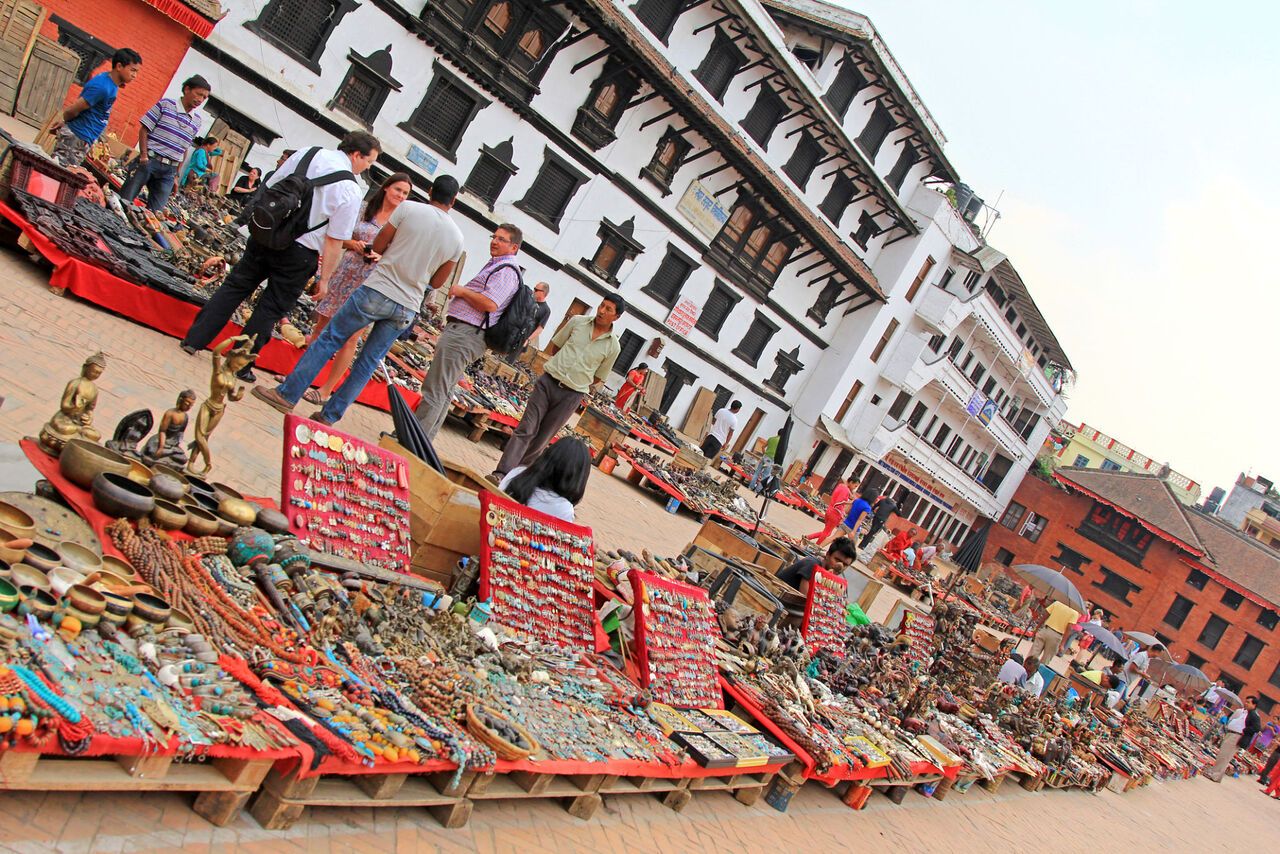
Stalls selling trinkets and souvenirs line the courtyards of Hanuman Dhoka in Kathmandu © sasimoto
The Tribhuvan Museum
Tribhuvan museum is named for the man considered to be the rashtrapita or father of the nation. In 1951, he helped to restore the reign of the monarchs and forge new connections with the world outside Nepal’s borders. The south and western parts near Nassal Chowk are filled with artifacts, collectibles, and other items from when Tribhuvan was king. Though wonderful to look at, the museum lacks English translations or information about what the items are. Among them are the king’s gem-encrusted ornaments used when he was crowned, thrones and other furniture, trophies, guns, and a fancy casket. If you can read them, the 1950-1951 newspaper articles and pictures give a full story of the dramatic events. Tribhuvan fled to India for safety, led the resistance efforts from afar, and then came back once the Rana rule was over. This popular figure also had the Kathmandu Airport named after him.
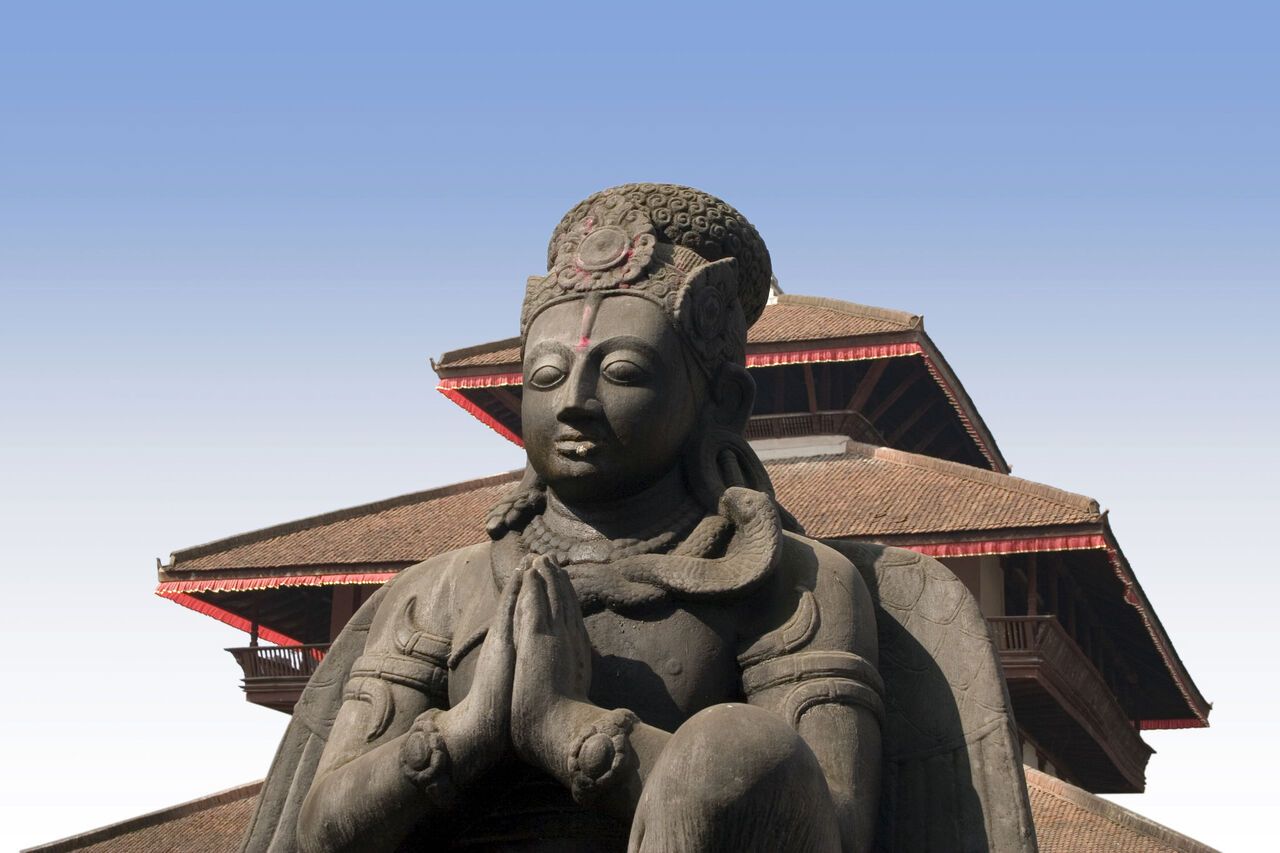
One of the numerous stone and wooden statues, courtyards, temples and other structures that make up the Hanuman Dhoka Complex in Kathmandu, Nepal © jmaehl
Basantapur Tower
The next site to see near the Tribhuven Museum is the impressive Basantapur Tower. It stands nine stories tall, which makes it the largest of Prithvi Narayan Shah’s towers constructed to represent Kathmandu’s four major cities. The brick tower is covered with layers of fine wood carving. At the base, you can even find some erotic pictures that require close scrutiny to decipher. The tower existed before Prithvi Narayan had the four built, but he added additional stories to reach 30 meters at present. The name means Pavilion of Spring, and the intended purpose was pure pleasure. Visitors know can climb the stairs to get a panoramic view of Kathmandu Valley. Sights from atop its narrow stairs include the Taleju Temple in the north, Basantapur Square, the multi-tiered rooftops of the palace itself, and more. Even if you do not make it to the top floor, you can see many wonderful things from the temple. The hard climb pays off with latticework walls, wind chimes and bells ringing in the breezes, and even more spectacular views than before.
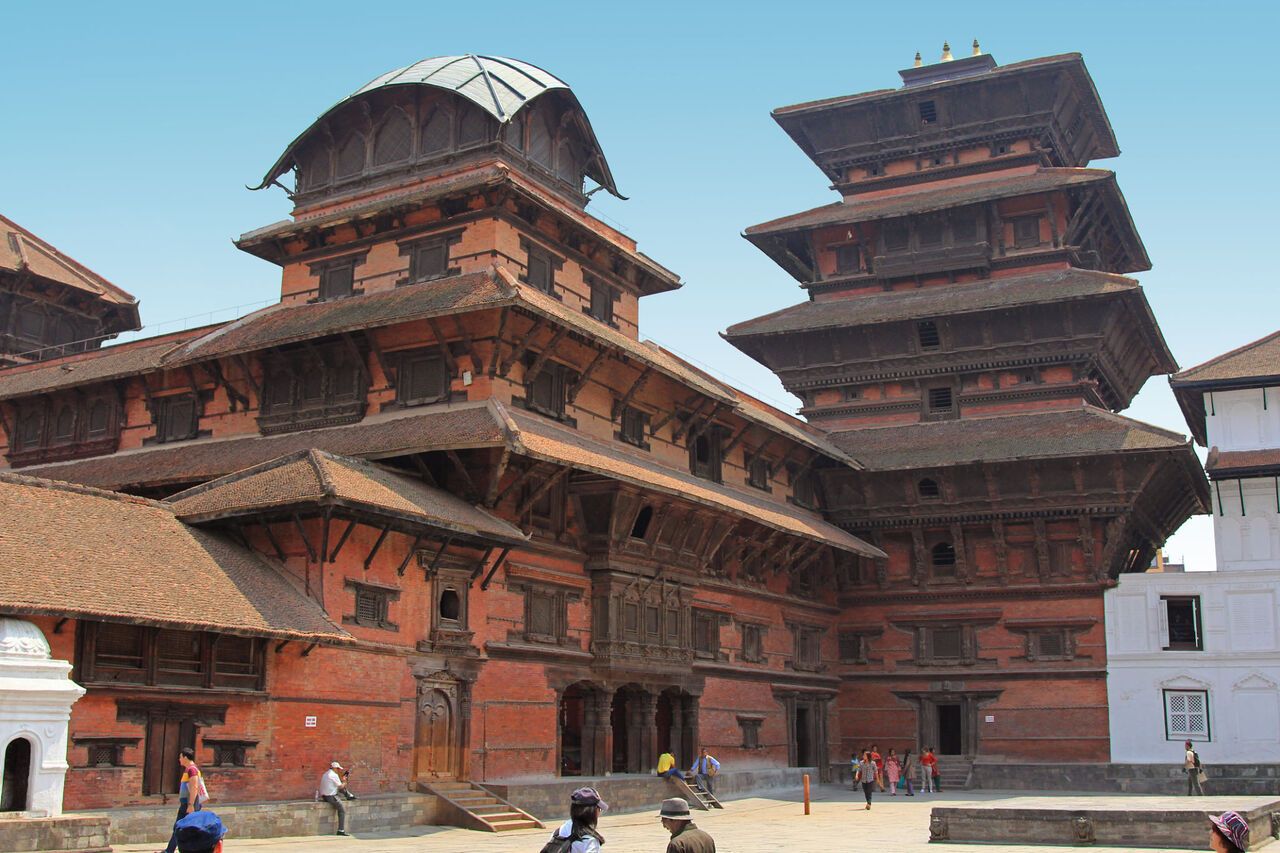
Basantapur Durbar, also referred to as Kathmandu Tower was built in red brick and wood and is a nine story monument of which the upper two were destroyed in the 2015 earthquake © sasimoto
Mahendra Museum
Climb back down the Basantapur Tower into the Nassal Chowk or explore the Mahendra Museum. Its mazelike hallways follow the progression of the royal king Mahendra much like Tribhuvan’s museum does for him. You can view representations of his cabinet room and office rebuilt with exact detail and a list of the animals he hunted successfully in many countries. After you are done learning all you can about Mahendra, walk back out to the Lohan Chowk.
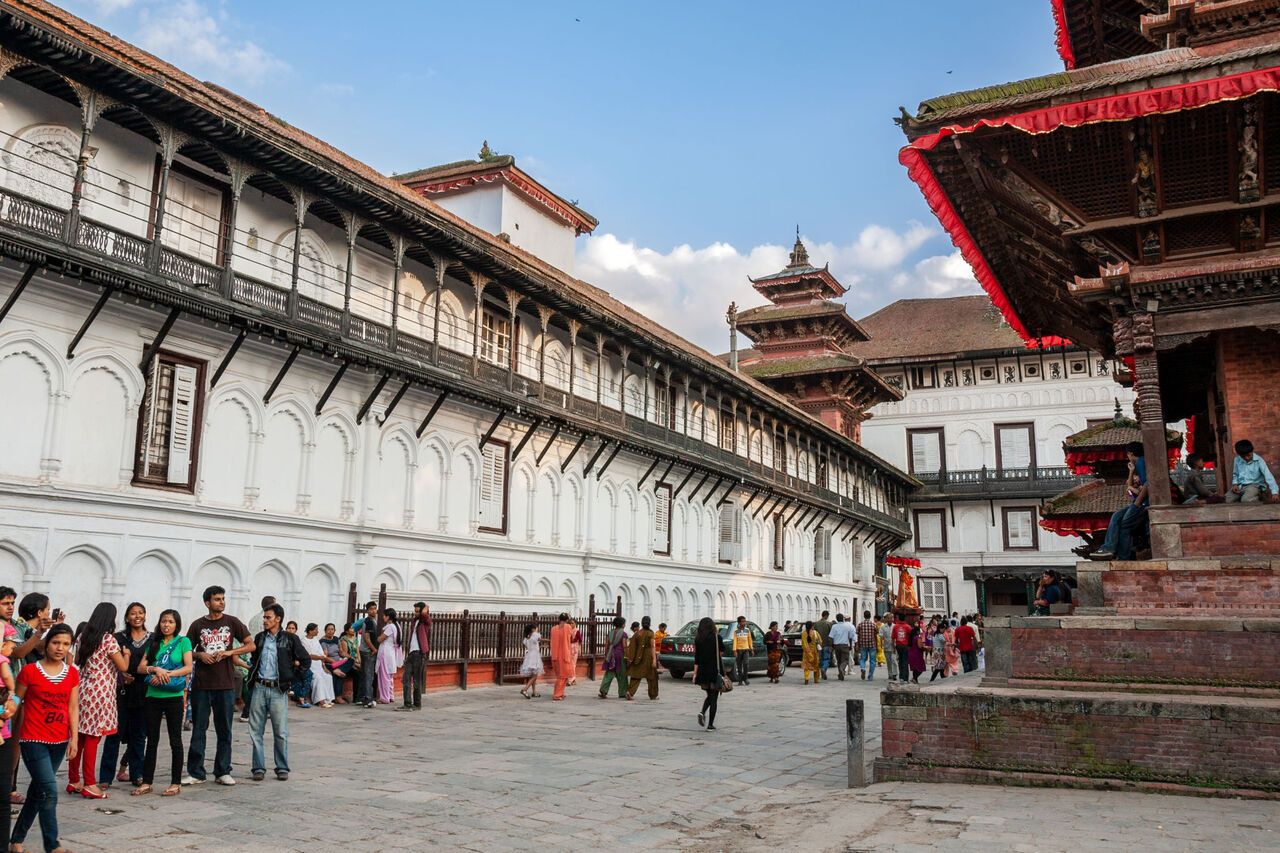
Foreign and local visitors on Durbar Square near Hanuman Dhoka. This picture was taken before the 2015 earthquake which caused extensive damage to many buildings in the complex © Yulia-B
Lohan Chowk
Nassal Chowk flows into Lohan Chowk through a detailed doorway with intricate wood carvings. The Elephant God Ganesh stands at the apex of the door. This courtyard is where the Malla and some Shah kings spent their everyday lives. The chowk is edged by four towers representing the Valley’s major cities after Prithvi Narayan Shah brought them together under one rule. They stand at each corner and lend a regal feeling to the area. They include the Kirtipur Tower, which has a copper roof dome, the Ialitput (Patan) tower, which is square, the Basantapur Tower, a lofty rectangle, and the Bhaktapur Tower, which has eight sides. The Vilas Mandi or Temple of Luxury fills the space between the Bhaktapur and Ialitput towers. Its intricately carved front features numerous patterns and designs covering the walls and windows.
Although the original beauty of these temples and courtyards was considerable, damage from earthquakes in 1934 and rotting wood over the years, damaged them so that they were near collapse in the 1970s. UNESCO and UNDR launched a renovation project to bring the palace back to its former glory. Local craftspeople combined their abilities with more up-to-date technology and methods to rebuild. The first step was to dismantle everything with each of the 20,000 pieces of carved wood or painting carefully cataloged and charted. They were cleaned, wood was replaced, structural changes made, and then the unpainted wood was returned to its original location to be enjoyed once more.
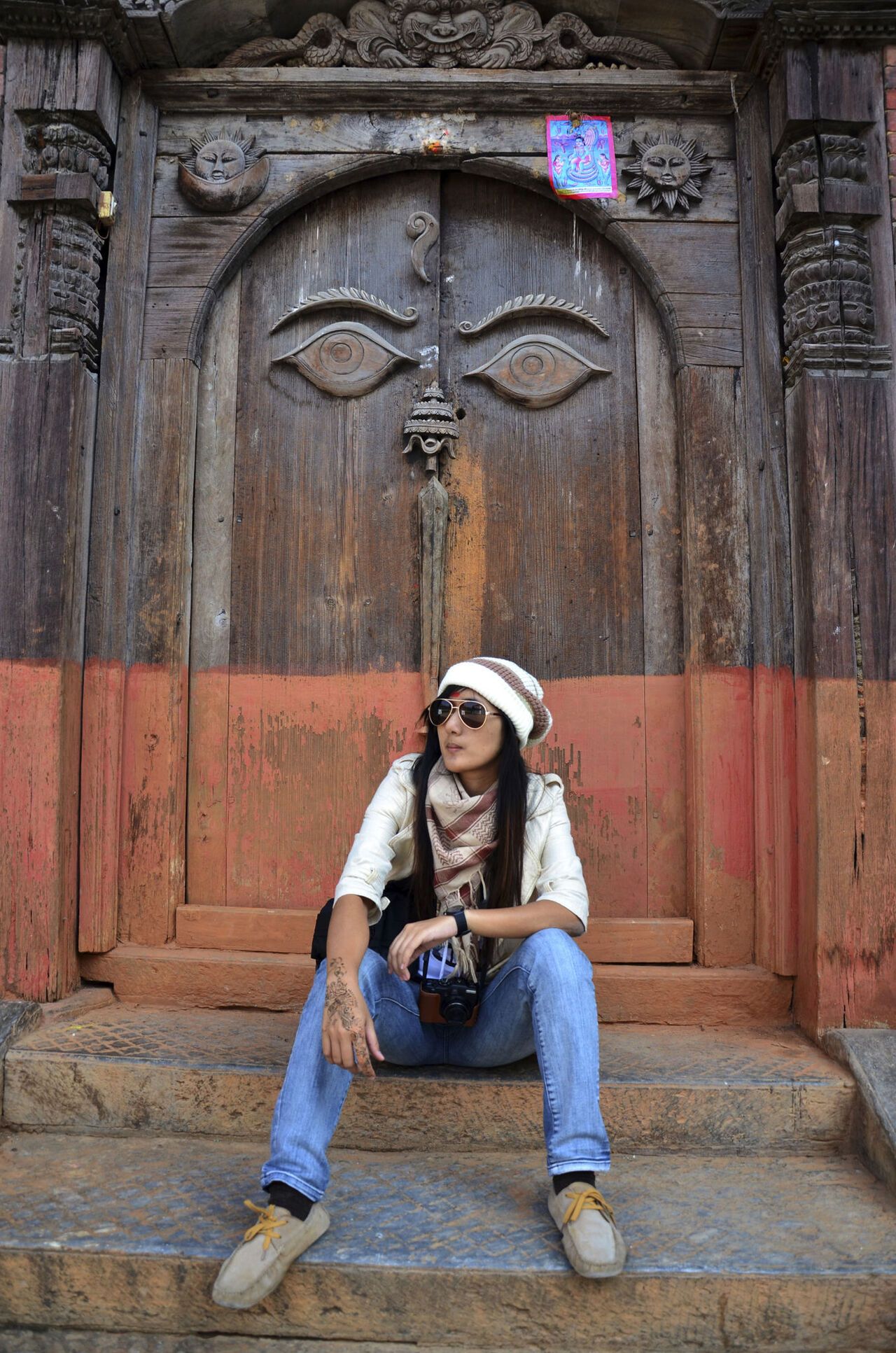
Almost every Buddhist shrine in the Hanuman Dhoka Complex has paintings or carvings of the Buddha’s Wisdom Eyes, symbolizing his omniscient nature. So prevalent are these all-seeing eyes that they have turned into a symbol of Nepal itself © Tuayai
Mul Chowk
The Mul Chowk is positioned behind Lohan courtyard. It is bordered by a southern wing that holds a shrine to Taleju or the living goddess Kumari. This part of the royal palace is older than any other and is not open to the public. The Mallas kings built it in 1564 and used it primarily for crowning the new rulers and marriage ceremonies. During the Dasain Festival, the royal family sacrifices animals in the center of the chowk. This ceremony is open to local Hindus for one day. Visitors must stay outside and can only peek in the doorway to see the wood carvings and other decorations.
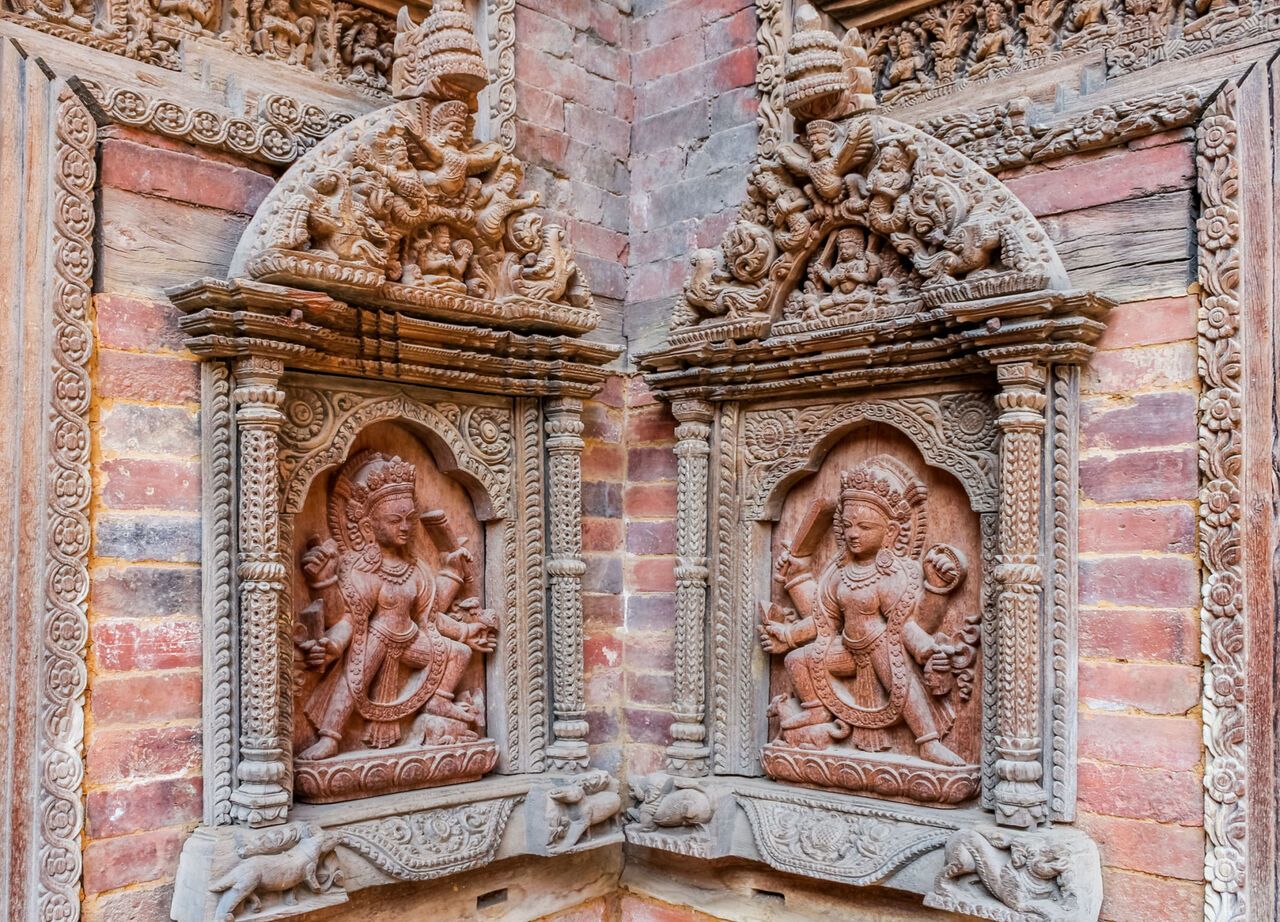
An excellent example of the outstanding craftsmanship of the Newari artisans who carved these stone figures on the wall of the Mul Chowk courtyard in Hanuman Dhoka, Kathmandu © IpekMorel
Sleeping Vishnu
The third of Kathmandu Valley’s sleeping Vishnu statues lies in Bhandarkhal, the royal gardens. You can find them to the east once you leave Lohan Chowk. The only way travelers can see into the courtyard, however, is from the Hotel Classic rooftop garden nearby. The discovery of this Vishnu statue is quite curious. Pratapa Malla found it submerged in a pond in Gyaneshwar. To display it properly, he had skilled builders construct a tank and ordered that it could only be filled with the Budhanilkantha sleeping Vishnu statue’s tank. It took more than one year to complete the canal joining the two. When it was finished and the water flowed from one to another, Pratapa Malla praised Vishnu. A later dream warning him away from Budhanilkantha began a series of kings avoiding that spot for fear they will die. During the excavation, workers found the Kaalo Bhairab and brought it back to guard the door of Durbar Square.
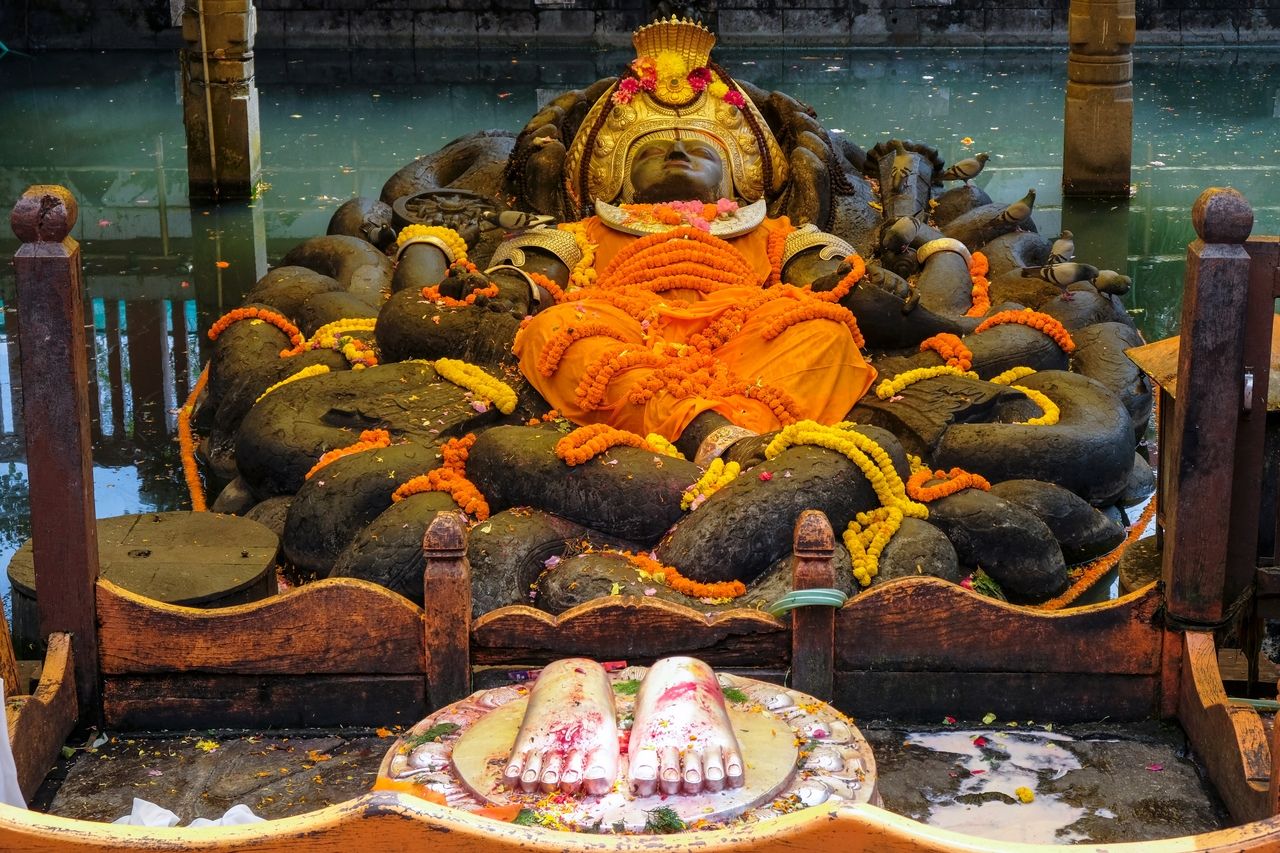
A statue of the reclining Vishnu as Narayan in the Budhanilkantha open air temple in Kathmandu floats in a water tank © Oscar Espinosa
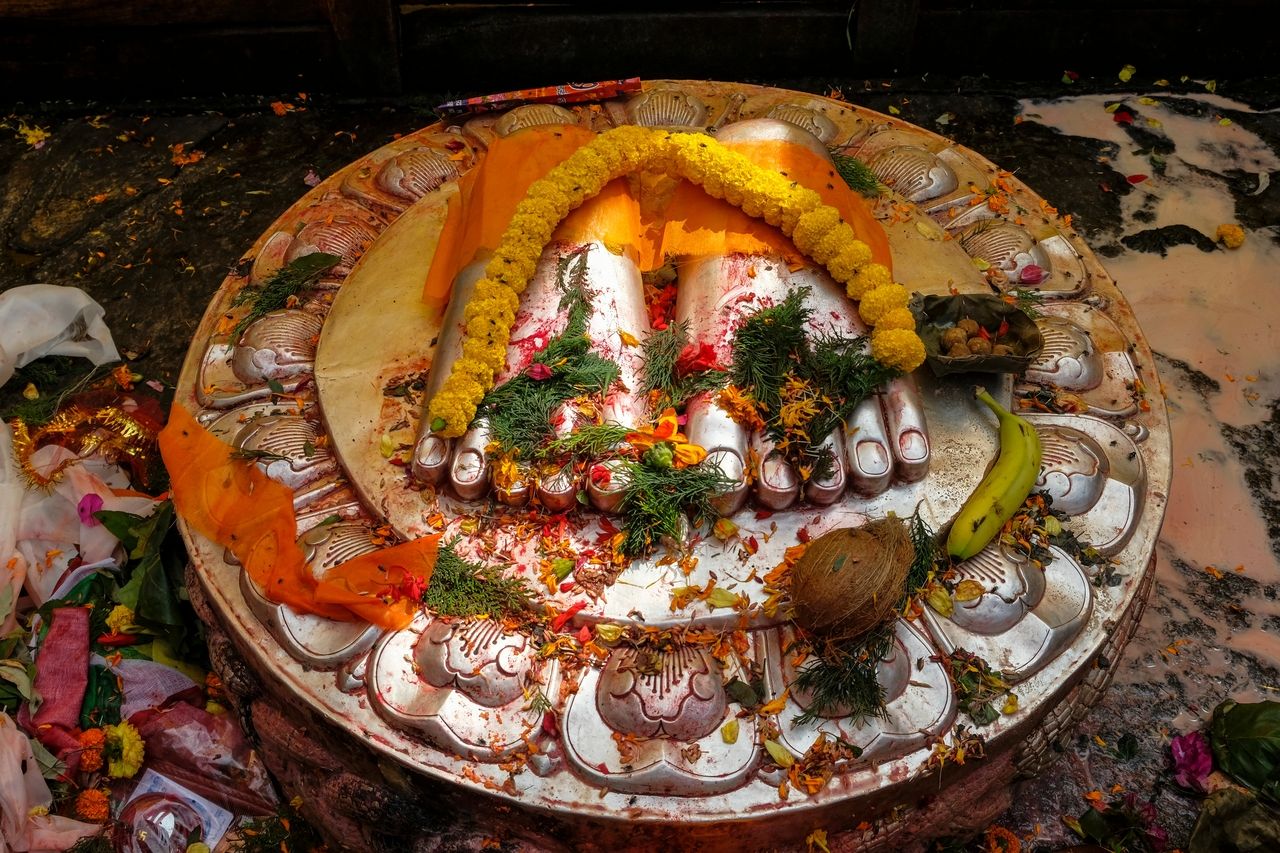
Detail of the reclining Vishnu, creator of all life, in the open air temple of Budhanilkantha with offerings of flowers © Oscar Espinosa
Kumari Chowk
Walk southward through Durbar Square to visit the Kumari Chowk Temple, which is the place where the living goddess stays. The lush decorations show the importance of this Royal Kumari above the 10 or more other girl goddesses in the region. This temple embodies the unique and changeable religious beliefs that borrow from older native spiritual systems, Buddhism, and Hinduism in Nepal.
Visitors who are not Hindu can visit the courtyard, which is styled as a bahal with rich wood carving on doors, windows, and tall columns, but cannot venture upstairs. People eager to catch a glimpse of the Kumari should look up to her special window. At certain times of the day and year, she sits there resplendent in her red robes, silver accessories, and unique ritualistic makeup. Her red forehead showcases a third eye design in the center. You can take pictures of the chowk, but never of the Kumari herself. Instead, receive her silent counsel by forming a question in your mind. According to beliefs, you will find the answer you seek in her expression.
Adjacent to the Kumari Chowk is kept the chariot used to convey the Kumari through the streets during Indra Jaatra, a popular festival. Tradition dictates that the heavy chariot yokes resting there must be preserved always. A few steps eastward bring you to Basantapur Square with its many vendors. It may be a great place to buy souvenirs now, but it was once where royal elephants were housed.
You may be tempted to rush through the Kumari Chowk, but the experience will be much richer if you settle a while quietly to let your mind muse over the importance of the building and living goddess in the form of a small girl inside.
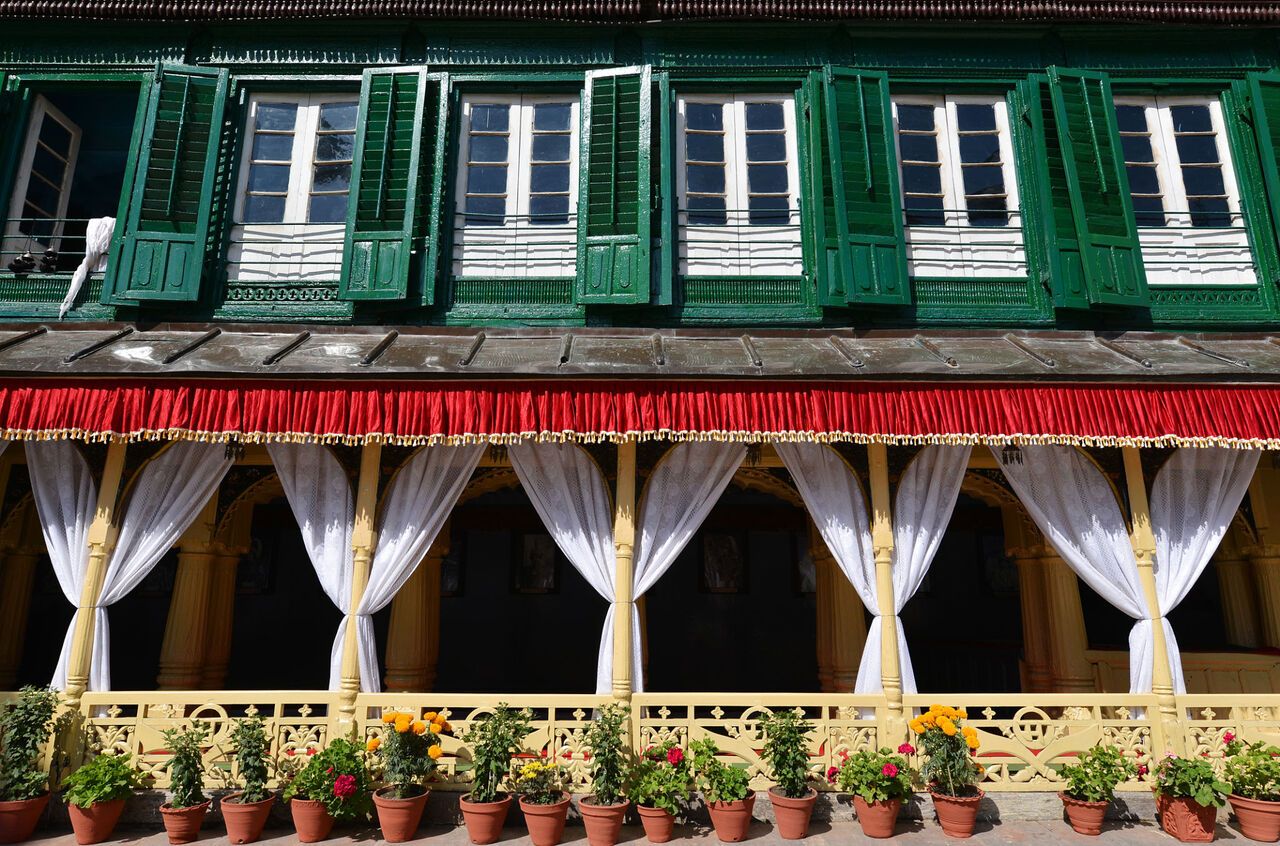
The old royal palace of the Malla kings and rulers of the Shah dynasty in the Hanuman Dhoka Complex. The square is named after the Monkey Deity, Hanuman, which has a statue near the main entrance. © salajean
Kasthamandap
An impressive temple at the center of the entire city called Kasthamandap, which means wood pavilion, stands to the southwest. Its base covers the convergence of trade routes from long ago. Unfortunately, the horrible earthquake in 2015 brought the whole thing tumbling down. All that remained was the stone plinth near one side. Rebuilding is still underway.
The origins of Kasthmandap are not completely known, but the earlier consensus is that King Lakshmina Narasimha Malla had the temple built in 1596. Every part was said to come from one gigantic Shorea robusta or sal tree. Now, historians know that it was built in the 1100s instead as it was mentioned in a manuscript written in that time. The position near the trade routes and the open space at the bottom showed it to temporarily house merchants and travelers who went between Nepal and Tibet.
Traders trekked past Terai, where malaria was a constant threat, and into Kathmandu to wait out the winter. As soon as the Tibetan mountain snows melted sufficiently, they would head back with new goods for sale. The Kasthmandap served as an important part of Nepal’s growing position in the world market of long ago days. It helped Kathmandu become a dominant force in that region of the world.
As trade changed, the building changed into a temple for worshippers of Gorakhnath, a place for tantric devotees to live, pray, and for tantric chakra puja. The shrine itself sat at the center of the temple, and other lesser gods also had shrines inside. This change included several attractive upgrades, but it was further embellished by later Malla kings. The front entrance is flanked by bronze lion statues. The first floor displays many pieces of Hindu artwork from epic tales and legends. As the building itself was then considered a representation of Ganesh’s four temples elsewhere in the Kathmandu valley, it features four statues of that god. Traditions state that worshipping Ganesh here means the same as worshipping at each of the four other temples.
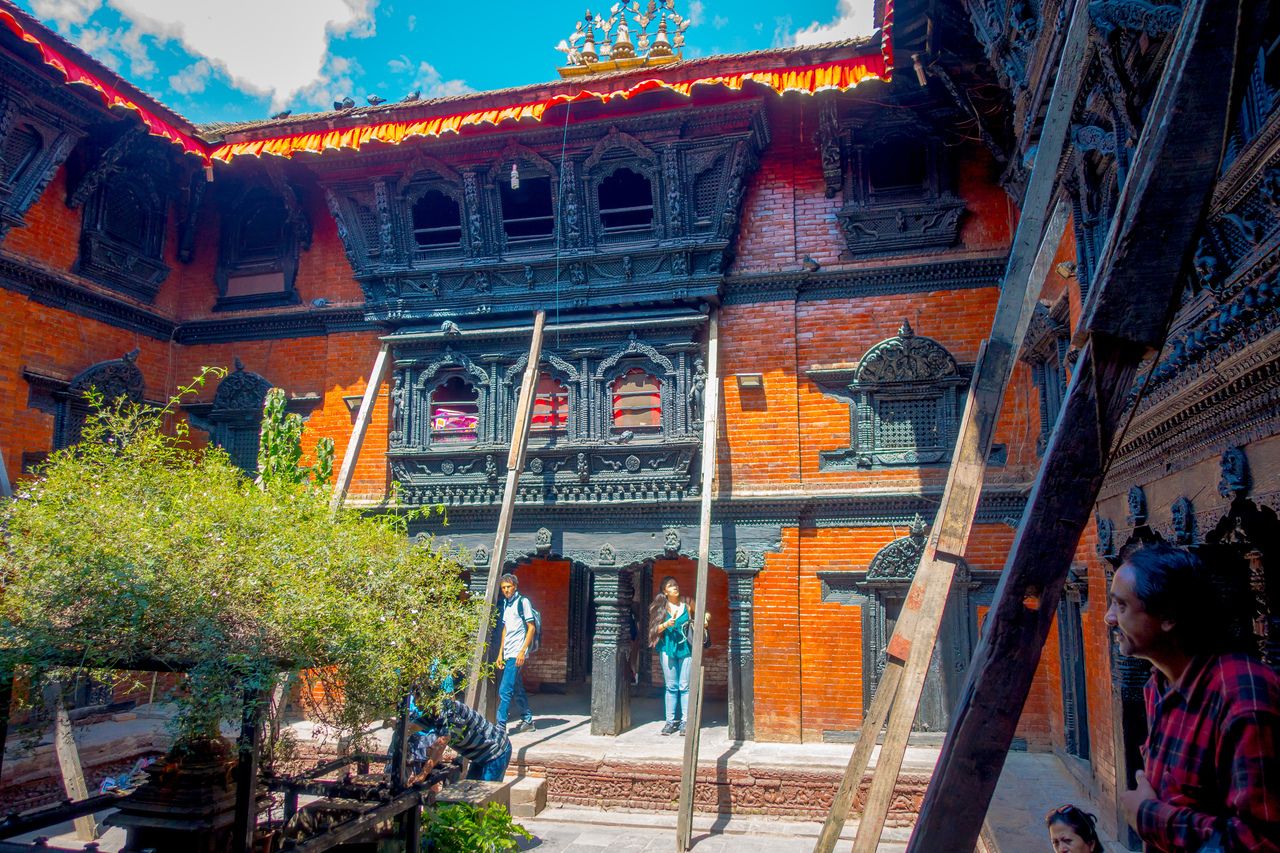
Kumari Ghar is the residence of the living goddess Kumari on Kathmandu Durbar Square. The building dates back to 1757 and is a wonderful example of the exquisite wooden carvings of Nepali architecture © Fotos593
Singha Satal (Silyan Sattal)
Another building that suffered from a history of earthquakes both in 1934 and 2015 is the Singha Satal. Just south of Kasthamandap, this building was supposedly constructed by wood from the same trees as that larger building. Its name comes from the word for lion. This moniker is well represented in the lion statues that stand at each of the building’s corners. Visiting the Singha Satal is worth your time as it contains one of the most appreciated depictions of Vishnu in Nepal. The four-handed figure appears as Hari Krishna atop Garuda, a god depicted as a type of man bird. The legend this image is taken from includes Vishnu destroying the demon king Bhaumasur and rescuing 1600 innocent girls.
Travel Tip:
An early morning visit will allow you to see men at prayer and women offering flowers to the gods here. Make time for another visit at night to experience the temples lit up with candles, small lamps, and floating incense smoke.
Kabindrapur Mandir (Dhansa)
On the eastern side of the Kasthamandap, the Kabindrapur Mandir temple stands. Here, the dancing form of Shiva is celebrated, and local dancers come here frequently to worship. They and other visitors can peer through the latticework surrounding the lowest floor to see Natyeshwar, the dancing Shiva, in different artistic poses. The architecture and decoration of this temple are equal reasons to visit. On top are three pinnacles that appear like white vases. Lower down is an intricately crafted balcony with seven windows surrounding the entire second story. The wood carving much-loved in this area can be seen on the support beams and more.
Maru Ganesh (Ashok Vinayak)
Although smaller than other temples in the area, this Ganesh temple is much appreciated. It is one of the first stops for worship after a new king is crowned. Its golden roof makes it stand out since 1874 when King Surendra Bikram Shah Dev ordered it added to the existing building. The elephant god Ganesh, also called Vinayaka or Ganapati, represents good luck, fortune, and wisdom in your life. Before Nepal travelers leave the city, they often stop here to pray for a successful and safe journey. The bell hanging at Maru Ganesh is frequently rung before worshippers move on to other temples as well. If you visit, take a look at the offerings and butter lamps sold nearby.
During the 1970s, hippies from around the world traveled to Nepal quite a bit. The small road stretching westward from this temple was named Pie Alley by them because many pie shops opened here. Now it is called Maru and holds different businesses.
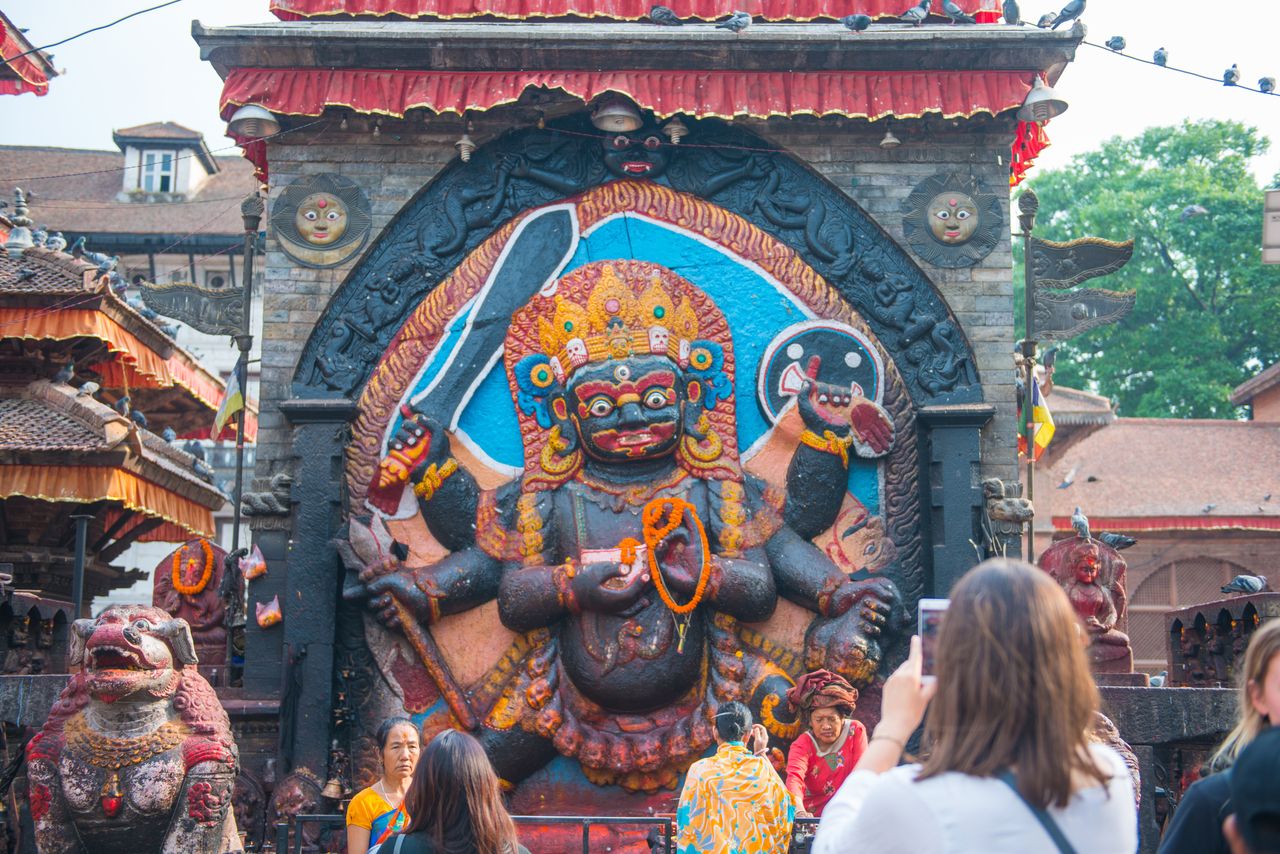
Kala Bhairava is the ruler of time in the universe and a fierce manifestation of Shiva. This image can be found on the deity’s temple at the Hanuman Dhoka in Kathmandu, Nepal © MosayMay
Narayan Mandir
Between Kumari Chowk and Kasthamandap lies the remains of the Trailokya Mohan. The earthquake in 2015 reduced it to rubble and it has not been rebuilt. In its place kneels Garud, the man-bird that carries Vishnu, in a traditional Namaste stance with palms pressed together. The Trailokya Mohan was originally built to honor Narayan, which is a name given to Vishnu by people from Nepal.
Pictures of the temple show three tiers rising above a plinth with five steps. Artistically carved roofs topped each of the tiers. More wood carving appeared on screens and supports. The images the artists chose to carve are reminiscent of an alternative name of the temple: Das Avtar Dekhaune Mandi, or the Ten Incarnation Views Temple. The ten include Matsya (fish), Baraha (boar), Vaman (boar), Kurma (tortoise), Parasuram (Brahmin), Narasingha (man-lion), Krishna, Rama, Buddgha, and Kalaki (destroyer of sinners)
Gaddi Baithak
Across from the Trailokya Mohan sits the Gaddi Baithak, which was built during the Rana era in the early 1900s and showcases a unique style of architecture most impressively. Another victim of the earthquake in 2015, it still awaits repair and rebuilding to return it to its former glory. It is currently closed to the public. Interestingly, during construction, it was found to rest on the remains of another building, a temple from the Lichhavi period of history.
What makes the architectural style of the Gaddi Baithak most unusual is its intent to look much like London’s National Gallery. It was built in a time when nobles and other rich citizens of Nepal traveled frequently to Europe and learned about those foreign styles of buildings. Its tall white columns and rectangular style look a bit out of place amidst the traditional Nepalese structures.
However incongruous to its neighbors, the Gaddi Baithak holds most important things. Inside sits a throne once used by kings, intricate chandeliers, and life-sized paintings of every Shah king throughout history. Before being damaged, the site housed governmental events and allowed important people to worship the Kumari.
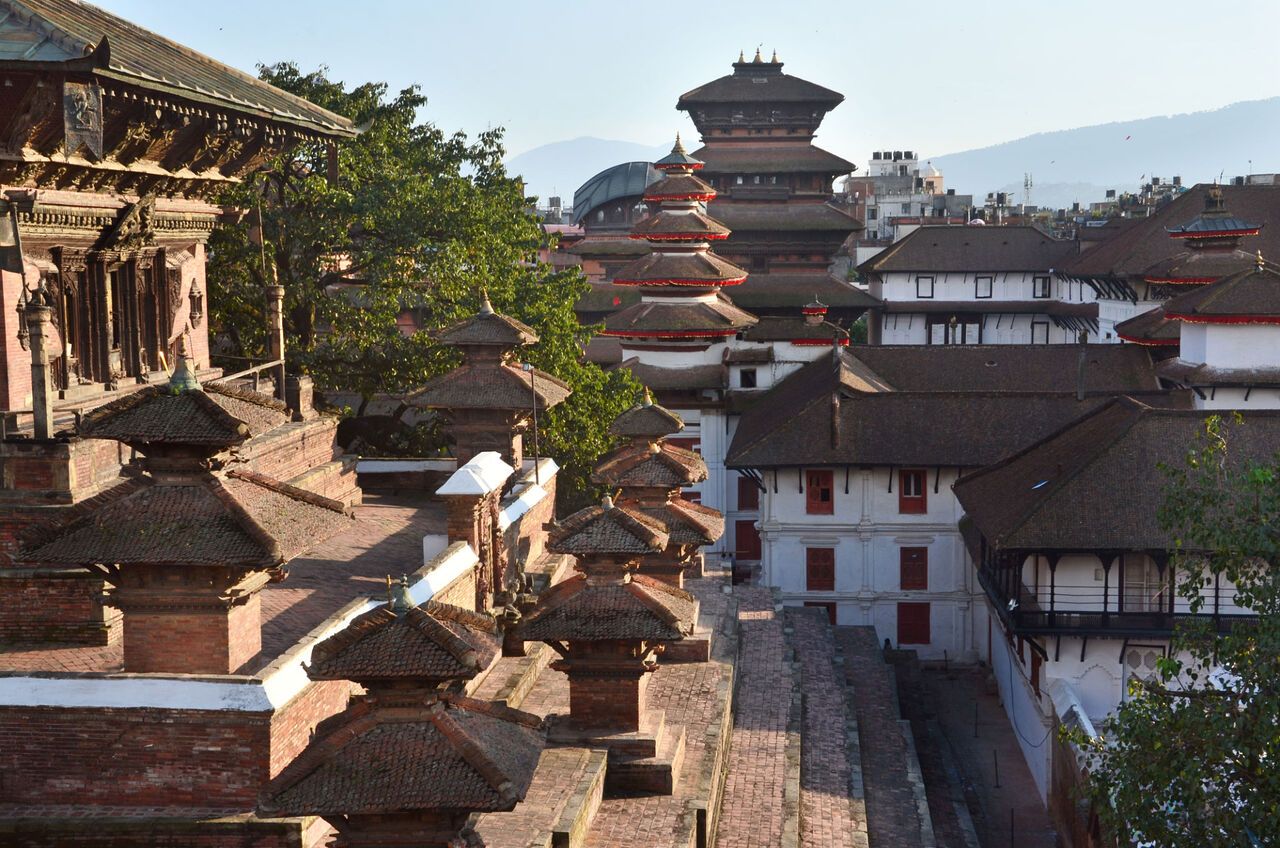
The royal palace and Teledzhu, one of the numerous temples that make up the Hanuman Dhoka Complex on Kathmandu Durbar Square, Nepal © irinabal18
Mahadeva Mandir (Maju Deval)
Another important building destroyed by the earthquake in 2015, the Mahadeva Mandir once stood as a temple of particular import to dancers and singers. It used to stand at the western side of the Gaddi Baithak, but only the side stairs remain today. People frequently sit on them for a while to rest during their exploration of the square. It was ordered built by Queen Riddhi Laxmi in the 1690s to celebrate the creative power of Shiva combined with a feminine quality. These were uniquely represented with depictions of the linga and yoni, which are symbols for male and female genitals respectively. One depiction of a dancing Shiva, the multi-limbed Natyeshwar, crafted in gold used to be in the temple according to people who live in the area but was stolen some time ago. The Newars honored this Shiva representation as a patron of dancing, singing, and all music.
Shiva Parbati Mandir
One beautiful building still open to visitors and mostly undamaged in past earthquakes is the Shiva Parbati Mandir. Built in the 1700s under the direction of Shah royalty, this temple does not focus mainly on the Shiva or Parbati, his consort. Artistic statues of them do appear in the window sitting close together. People who come to worship here do so for the nine mother goddesses displayed within, which are colorfully painted and adorned with fabric and flowers. Each represents one of the nine planets in the Solar System.
Around the Taleju Bell
As you stroll northward, the width of the square diminishes before opening into another courtyard with many temples lining its sides. Begin your exploration on the left hand side with the Taleju Bell, crafted in the 1700s and two ceremonial drums. All three of these instruments have been used to call people to worship or gather for other reasons or as an alarm. These days, they are used primarily during the Dasain festival. Also on the western side is the Chasin Dega dedicated to a flute-playing Krishna. It is an eight-sided temple and was built in the 1600s.
On the opposite side of this courtyard near the palace, a depiction of Jambhuwan, Hanuman’s well-known teacher, stands out in bas-relief. Nearby on the palace wall sits three windows of note. Not only are they framed by beautiful ivory and gold plate, they are the spots where Malla kings once sat to watch parades through the square. Unfortunately, the entire area sustained minor damage in the 2015 earthquake, but travelers can still walk through and marvel at the Taleju Bell area.
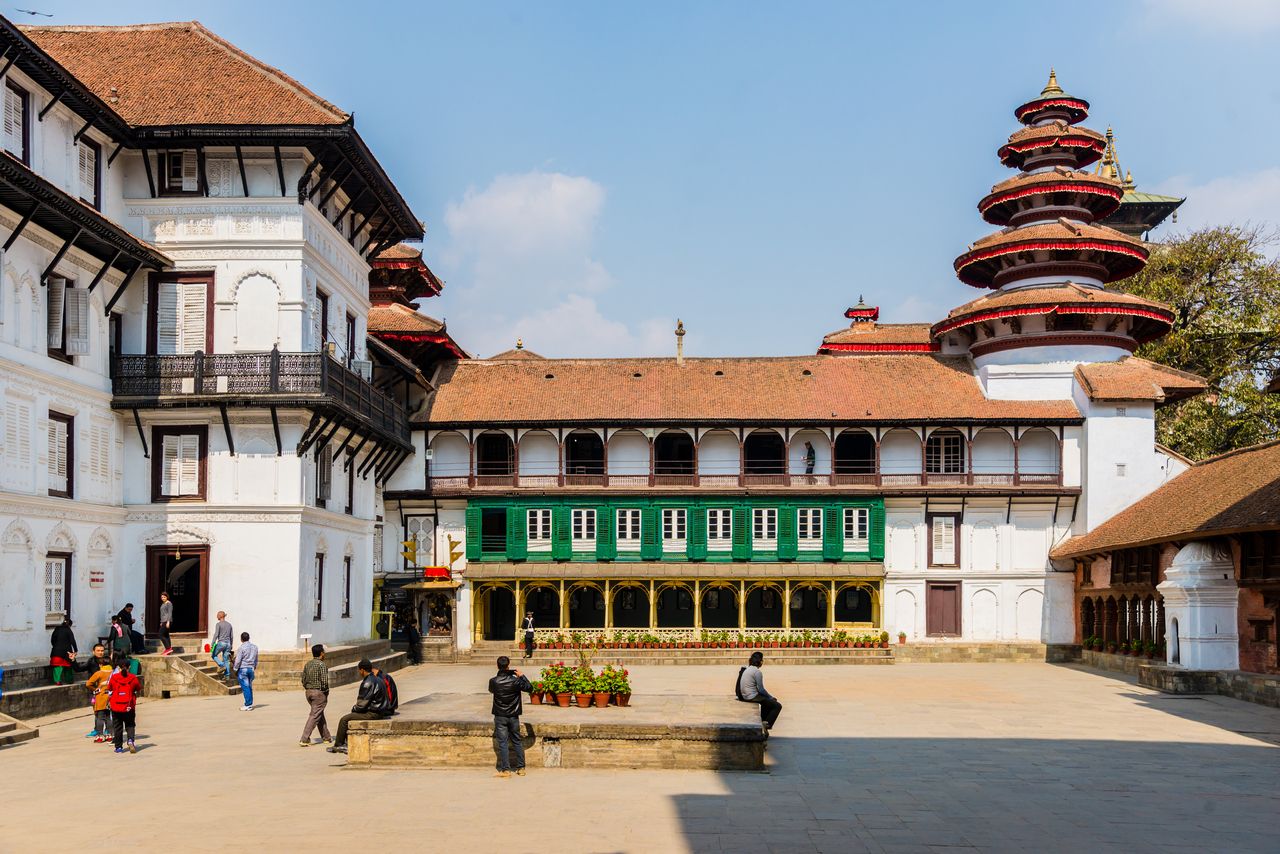
The beautiful courtyard of Hanuman Dhoka, the old royal palace of the Malla kings. Dhoka means door in Nepali © cornfield
The Sweta Bhairava Mask
Another intriguing sight to behold in the area is the Sweta Bhairava mask, thus called because of its unique depiction in white (sweta, seto, or seti). Bhairava masks are usually painted deep blue or black with accent colors. This once, which is displayed behind a heavy wood lattice, is mostly white with gold tones over it. Its frightening visage is topped with gems and skulls in the shape of an elaborate crown. The long tongue, intense eyes, and sharp fangs add to the fear factor. People should not worry when they view the Sweta Bhairava mask, however. This form of Shiva is used to chase away evil demons and spirits so they do no harm.
This white Bhairava mask was crafted in 1796 under the order of Rana Bahadur Shah. Although peering through the grille covering it is how most people can view the god’s art, it is opened in September for the Indra Jata festival. Worshippers come to offer it rice alcohol at this time. Then, when the temple attendants deem the mask blessed, they make blessed liquor flow from the mask’s mouth for the enjoyment of people who come to worship and celebrate.
Krishna Mandir
Stories vary about why King Pratap Malla built the Krishna Mandir temple in 1648. Some say the eight-sided building was to match the similar temple constructed in Patan. Others think it was in response to his prior attempt to conquer the city, which triggered an effort to find favor with the gods. It also might have to do with his two favored wives who passed away. The last idea seems to be supported by the depiction inside of Krishna and his two wives, Rukamani and Satyabhama, which were crafted to bear a similar appearance to Pratap Malla and his. Whatever the reason for its construction, the Krishna Mandir was an impressive building. It had three tiers rising up in the traditional Newari style with the addition of sturdy columns of stone supporting the roof. Most of the temple succumbed to the 2015 earthquake, but the platform it sat on still offers visitors and residents a place to sit or climb for a better view of this part of the square.
Jagannath Mandir
Reaching the eastern side of the square, you spy the Jagannath Mandir, built in a pagoda architectural style in the 1500s. This building was constructed to honor the god who is celebrated with a runaway chariot fette. From his name comes the English word “juggernaut”. The lower levels of this temple are decorated with quite intricate erotic wood carvings. In Kathmandu, these images stand out as the most talked about in whispers as they show such outrageous scenes including threesomes, athletic positions, and even bestiality. There is some disagreement about the reason for such images on a temple. Some say they tell followers that sex is an integral part of the tantric path toward enlightenment. Most people, however, believe the decorations are intended to keep the virginal goddess of lightning at bay.
Adjacent to the Jagannath Mandir, the stone wall of the palace bears an inscription directed by King Pratap Malla in 1664. In 15 different languages, including English and French, the poem honors the goddess Kali. The King planned most of Durbar Square’s temples and wrote extensively. Legend states that if anyone can read the entire poem, fresh milk will run out of a nearby tap.
Kala Bhairava
Across from the Jagannath Mandir, a stunning sculpture attracts attention. Historians estimate that it was carved during the Lichhavi period, although the statue was only found between 1641 and 1674 while Pratap Malla ruled, lying in a field in the region that lies to the north of Kathmandu. The statue itself is 3.5 meters, solid stone, and depicts a rotund figure of Kala Bhairab or Black Bharaib rejoicing through dance atop a dead demon. The reason for the statues positioning across from the justice office is steeped in legends. These stories state that people who tell lies within the statue’s sight will become horribly ill, vomit up blood, and die. A more recent legend tells of a time when court witnesses lied so much that the local powers decided to contain the statue in a temple so everyone would not die.
Taleju Mandir
Kathmandu’s largest temple towers 40 meters over the street. It rests upon a solid plinth with 12 layers. King Mahendra Malla ordered the construction of the Taleju Mandir in the 1500s. He insisted that no other building ever rise higher than this temple. This rule remained in the building codes until the mid-1900s. Its magnificence is unmatched, and it is definitely worth a visit to view from the outside even though it was damaged in the earthquake in 2015. It is still undergoing repaid and renovation.
Even when not closed by construction projects, no foreign tourists can go inside. People from Nepal are only allowed in on the 9th day of Dasain holiday. The goddess it represents is a unique blend of the Hindus’ mother goddess Durga and one of the Buddhist’s Taras female tantric goddesses. The Mallas first introduced Taleju Bhawani in the 1300s as they learned about her from their South Indian neighbors. A smaller brick house behind the temple houses Taleju’s older-sister goddess named Tarani Devi.

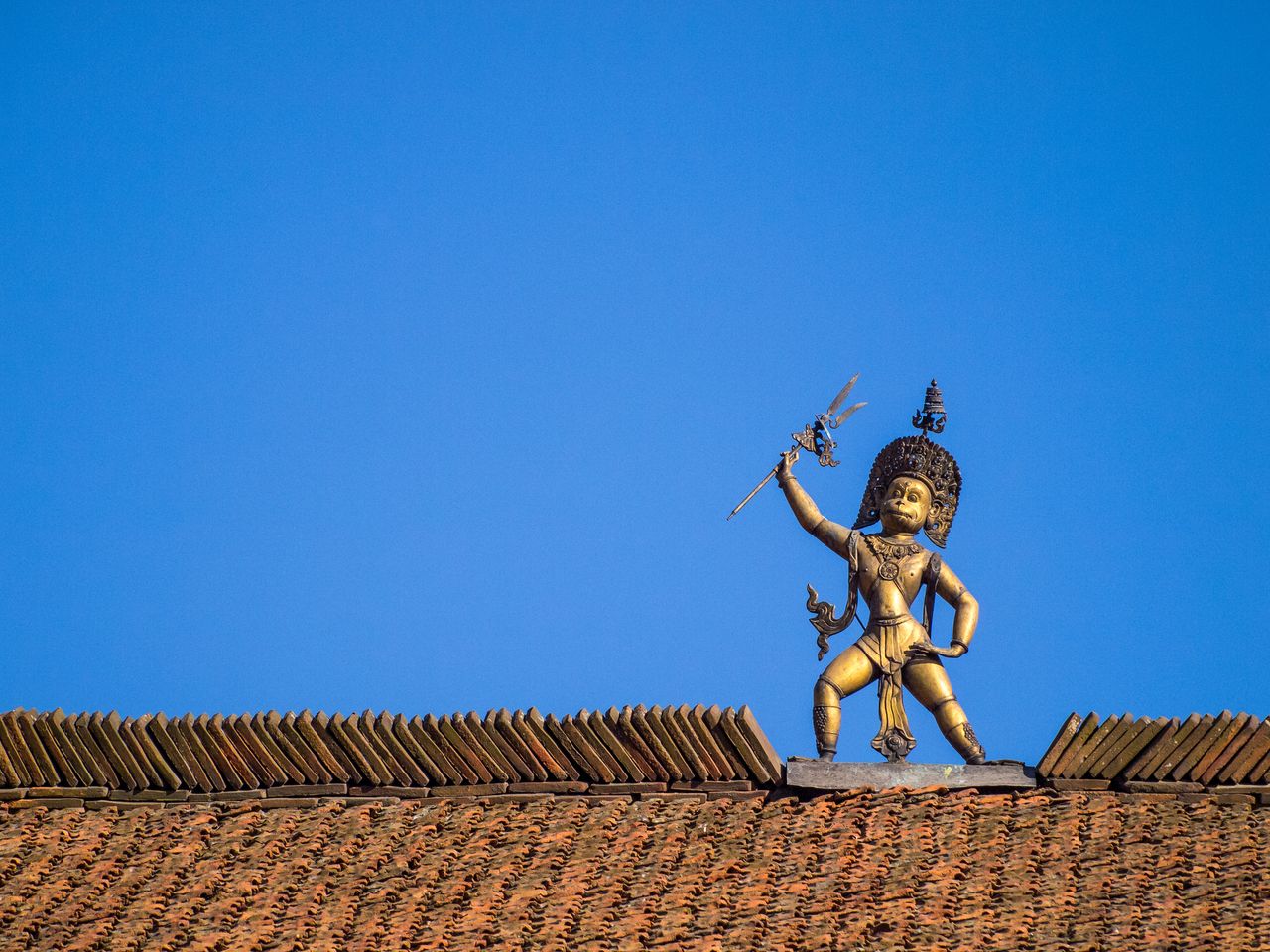
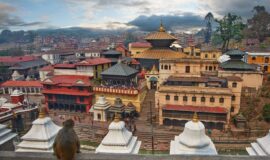
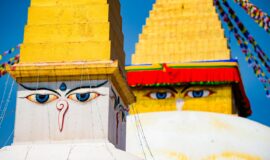
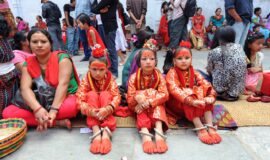
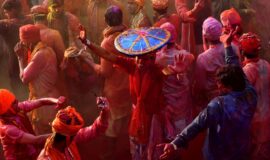
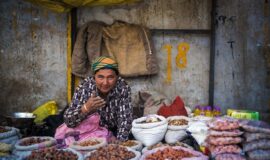
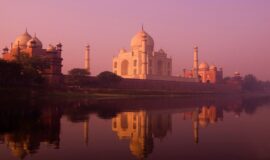
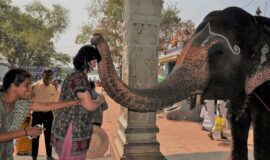
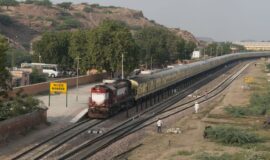
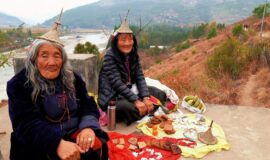
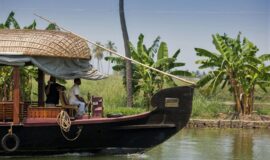
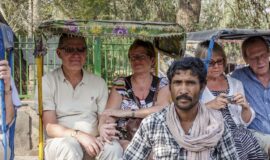
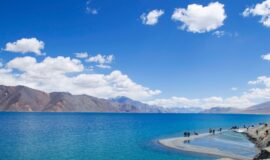
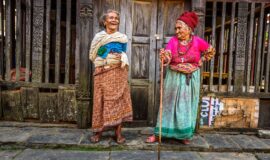
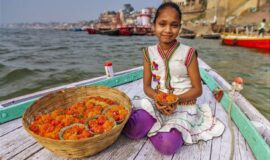
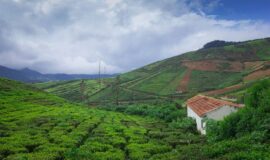
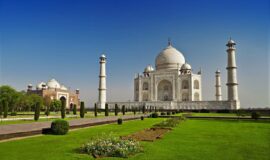
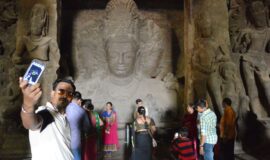
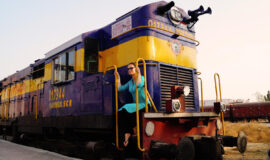
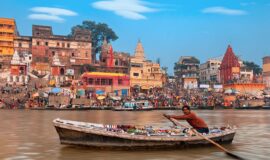
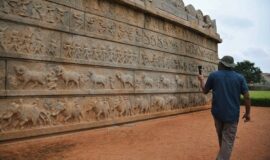
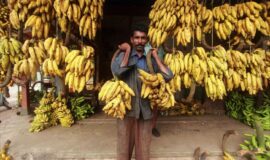
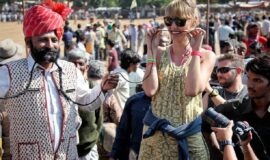
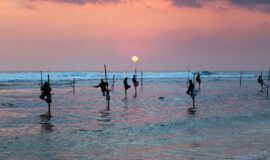
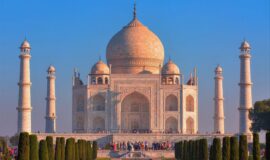
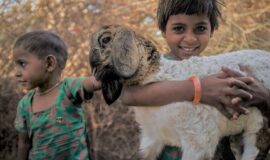
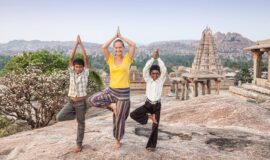
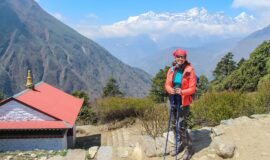
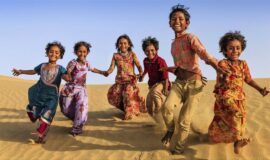
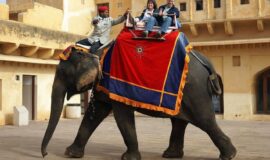
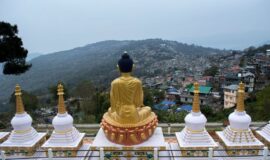
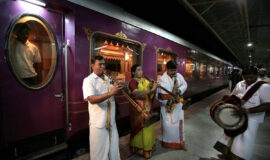
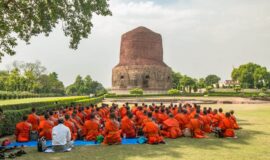
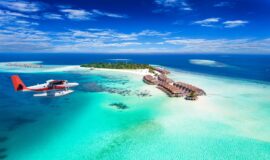
![Golden Triangle Tour with Goa [Culture + Beach Vacation] (12 days) Golden Triangle Tour with Goa [Culture + Beach Vacation] (12 days)](https://www.vacationindia.com/wp-content/uploads/2022/06/golden-triangle-tour-with-beach-vacation-270x160.jpg)
